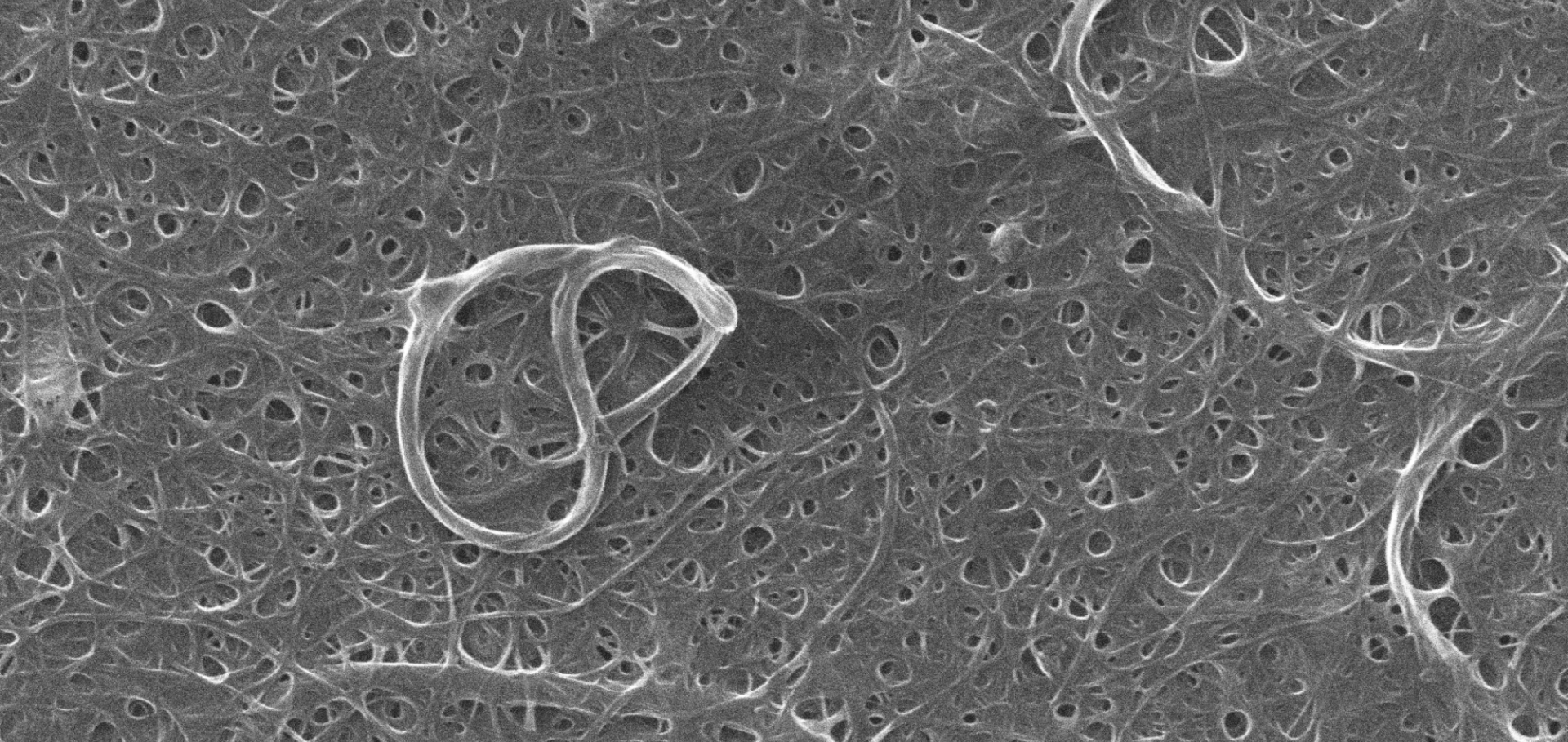Improving performance of fully scalable, flexible transparent conductive films made from carbon nanotubes and ethylene-vinyl acetate
Energy Reports Elsevier 8:S11 (2022) 48-60
Abstract:
We report process improvements for the fabrication of single-walled carbon nanotube ethylene-vinyl acetate transparent conductive films. CNT:EVA films demonstrate high resilience against folding and can replace the external dopant in a spiro-OMeTAD based hole selective contact of n-i-p perovskite solar cells achieving a steady-state efficiency of 16.3%. The adapted process is fully scalable, and compared to previous reports (Mazzotta et al., 2018) lowers the material cost dramatically and improves DC to optical conductivity ratio by two orders of magnitude to σdc/σop = 3.6 for pristine and σdc/σop = 15 for chemically doped films. We analyse the microstructure of our films via small angle neutron scattering and find a positive correlation between the long range packing density of the CNT:EVA films and the σdc/σop performance. Increasing monomer ratio and chain length of the EVA polymer improves resilience against bending strain, whereas no significant effect on the CNT wrapping and electrical conductivity of resulting films is found.Understanding the Degradation of Methylenediammonium and Its Role in Phase-Stabilizing Formamidinium Lead Triiodide.
Journal of the American Chemical Society 145:18 (2023) 10275-10284
Abstract:
Formamidinium lead triiodide (FAPbI3) is the leading candidate for single-junction metal-halide perovskite photovoltaics, despite the metastability of this phase. To enhance its ambient-phase stability and produce world-record photovoltaic efficiencies, methylenediammonium dichloride (MDACl2) has been used as an additive in FAPbI3. MDA2+ has been reported as incorporated into the perovskite lattice alongside Cl-. However, the precise function and role of MDA2+ remain uncertain. Here, we grow FAPbI3 single crystals from a solution containing MDACl2 (FAPbI3-M). We demonstrate that FAPbI3-M crystals are stable against transformation to the photoinactive δ-phase for more than one year under ambient conditions. Critically, we reveal that MDA2+ is not the direct cause of the enhanced material stability. Instead, MDA2+ degrades rapidly to produce ammonium and methaniminium, which subsequently oligomerizes to yield hexamethylenetetramine (HMTA). FAPbI3 crystals grown from a solution containing HMTA (FAPbI3-H) replicate the enhanced α-phase stability of FAPbI3-M. However, we further determine that HMTA is unstable in the perovskite precursor solution, where reaction with FA+ is possible, leading instead to the formation of tetrahydrotriazinium (THTZ-H+). By a combination of liquid- and solid-state NMR techniques, we show that THTZ-H+ is selectively incorporated into the bulk of both FAPbI3-M and FAPbI3-H at ∼0.5 mol % and infer that this addition is responsible for the improved α-phase stability.Doping Carbon Nanotube Ethylene-Vinyl Acetate Thin Films for Touch-Sensitive Applications
ACS Applied Electronic Materials American Chemical Society 7:11 (2025) 4738-4746
Abstract:
Transparent conductive films are key components of many optoelectronic devices but are often made from either scarce or brittle materials like indium tin oxide. Carbon nanotube-polymer films offer an abundant and flexible alternative. Here, we report how the dimensions of the carbon nanotube raw material affect their thin film performance and thickness yield when processed with the polymer ethylene-vinyl acetate. We perform chemical doping with several halogenated metals and find the electron affinity of the metal to be a good indicator of p-doping effectiveness. We identify CuCl2 as low-cost alternative to the established gold chloride dopants. Optimising the dopant deposition method allows us to reduce the effect of doping on the optical transmittance. Percolation analysis of our films demonstrates that optimized single-walled carbon nanotube-ethylene-vinyl acetate films show no sign of percolation effects down to thicknesses of 5 nm. Finally, we produce transparent touch-sensitive devices. Comparing several of these devices, we find a linear relationship between the sheet resistance and the on/off ratio of the touch sensing that can be used to determine a threshold film thickness. Using doped carbon nanotube-ethylene-vinyl acetate films increases the on/off ratio and allows us to fabricate touch-sensitive devices with an on/off ratio of 10 at 95% optical transmittance. This clearly demonstrates the potential of these films for transparent touch-sensitive applications.Machine learning discovery of cost-efficient dry cooler designs for concentrated solar power plants
Scientific Reports Nature Research 14:1 (2024) 19086
Abstract:
Concentrated solar power (CSP) is one of the few sustainable energy technologies that offers day-to-night energy storage. Recent development of the supercritical carbon dioxide (sCO2) Brayton cycle has made CSP a potentially cost-competitive energy source. However, as CSP plants are most efficient in desert regions, where there is high solar irradiance and low land cost, careful design of a dry cooling system is crucial to make CSP practical. In this work, we present a machine learning system to optimize the factory design and configuration of a dry cooling system for an sCO2 Brayton cycle CSP plant. For this, we develop a physics-based simulation of the cooling properties of an air-cooled heat exchanger. The simulator is able to construct a dry cooling system satisfying a wide variety of power cycle requirements (e.g., 10–100 MW) for any surface air temperature. Using this simulator, we leverage recent results in high-dimensional Bayesian optimization to optimize dry cooler designs that minimize lifetime cost for a given location, reducing this cost by 67% compared to recently proposed designs. Our simulation and optimization framework can increase the development pace of economically-viable sustainable energy generation systems.Emissive brightening in molecular graphene nanoribbons by twilight states
Nature Communications Springer Nature 15:1 (2024) 2985


